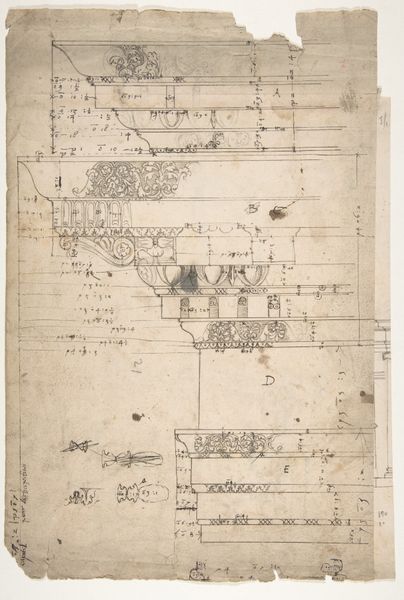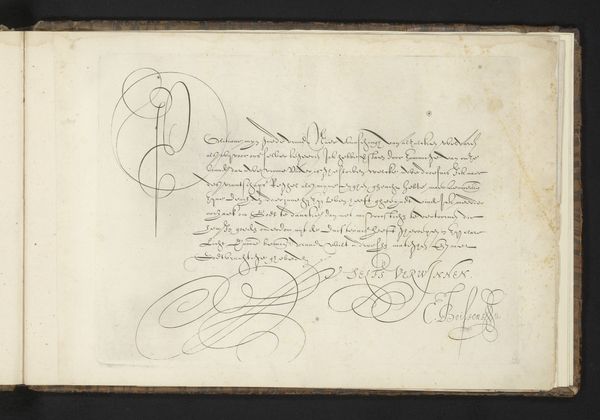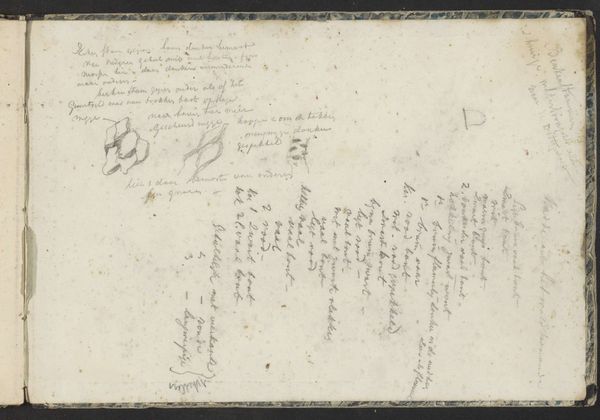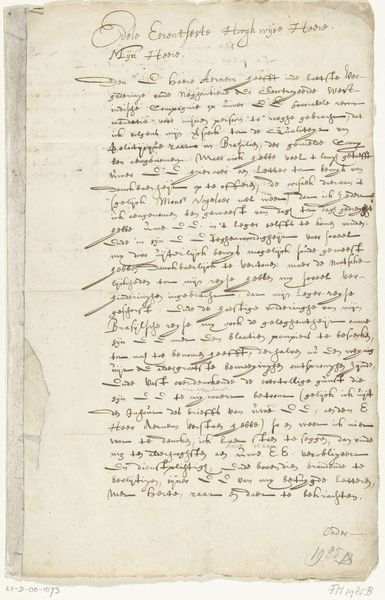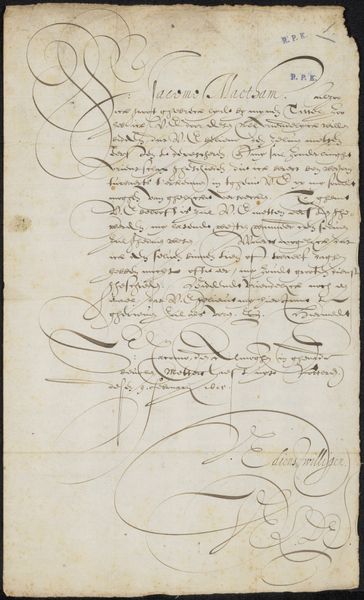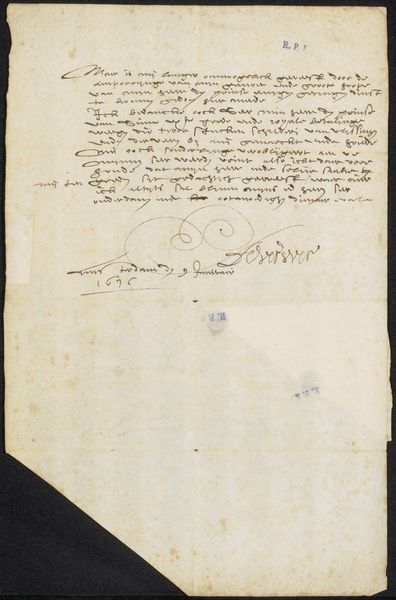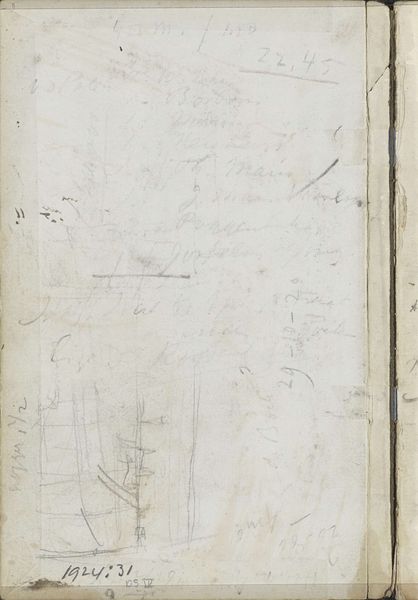
drawing, paper, ink
#
drawing
#
baroque
#
dutch-golden-age
#
landscape
#
figuration
#
paper
#
ink
#
orientalism
#
history-painting
Dimensions: height 295 mm, width 228 mm
Copyright: Rijks Museum: Open Domain
Curator: This work, dating from around 1660, is entitled "Sketches of Weapons and a Group of Chinese People". It is attributed to Wouter Schouten, crafted using ink on paper. Editor: The initial impression is of something quite fragile, ephemeral almost. The faded ink lines sketch a scene, and give the eye enough to see that the central theme revolves around war artifacts and oriental characters. Curator: Yes, and what interests me particularly here is situating the drawing within the history of Dutch Golden Age Orientalism. Schouten, after all, traveled to Asia as a surgeon for the Dutch East India Company. This piece could provide visual context for colonial narratives and how "the other" was represented in the Dutch collective conscious. Editor: I see what you mean. The spears, the muskets, and other bladed instruments are positioned, in relation to each other. The artist creates an index of Western power as seen in those instruments that conquered and exploited Eastern lands and cultures. It's very telling. What do you observe of the group of "Chinese People?" They seem meekly drawn and blurred to contrast these implements of conquest. Curator: Exactly. Note also how the sketches lack detailed facial features. This lack of individuality, as seen in their clothing, echoes prevalent stereotypes and suggests how Dutch traders othered foreign people within economic systems fueled by racist structures and cultural appropriation. Editor: The objects speak volumes; they create that hierarchy for the viewer immediately. They appear as imposing dark blots, casting their long shadow into history. I’m also noticing now some written annotations as well. Do we know what they reference? Curator: Unfortunately, not yet, though studying this further to give further context about Dutch engagement within Asia is compelling in regard to contemporary post-colonial analysis. It certainly compels critical engagement to analyze art during that time. Editor: Yes, precisely, to acknowledge the symbols of oppression that linger beneath a seeming innocuous drawing allows us to approach these moments with mindful consideration.
Comments
No comments
Be the first to comment and join the conversation on the ultimate creative platform.


